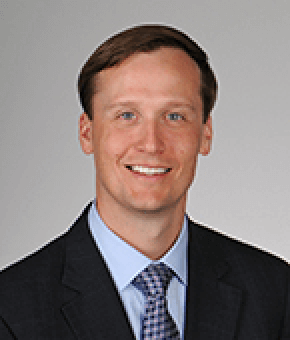930. A Day in the Life: What's It Really Like to Be a Pain Management Physician?
Michael “Gabe” Hillegass, M.D.

“I like being part of a team. I work alongside great physicians and nurses, and others and it’s fun to do that. It’s highly rewarding to care for others–to see somebody who is struggling with a painful condition and help them to make that more manageable. I enjoy working with my hands. I enjoy problem-solving. I enjoy the marathon of building a practice. I’m starting a pain fellowship here at MUSC, which we’ve not had for a couple of decades. Just being a part of something new and always growing and improving on every level–professionally and personally. I’m grateful every day that I wake up.”
Dr. Michael “Gabe” Hillegass is a board-certified interventional pain management physician and anesthesiologist. He is medical director of the Chronic Pain Clinic and an associate professor within the College of Medicine at the Medical University of South Carolina (MUSC) in Charleston, SC. Dr. Hillegass completed his anesthesiology residency at MUSC, where he was a chief resident, before moving on to Harvard Medical School’s Brigham & Women’s Hospital for his pain medicine fellowship training. He subsequently served four years on active duty with the navy at the Naval Medical Center Portsmouth, Virginia. He has won research and teaching awards and has published research articles in peer-reviewed medical journals as well as numerous chapters in pain medicine textbooks. He is dedicated to educating his patients and their loved ones as well as rotating medical students and residents on safe and effective comprehensive pain management strategies.
The Most Impactful Turning Point?
“I knew I wanted to practice anesthesia by my third year of medical school. I really enjoyed cardiovascular physiology, pulmonary physiology and related aspects of the core curriculum. While someone is having surgery, you are responding to changes in their heart rate and blood pressure and oxygen levels. From the evaluation to putting someone safely under general anesthesia to maintaining their vital signs to waking them up, there are many steps along the way–there is instant gratification performing a successful anesthetic even though the patients don’t even know your name. After awhile I realized that I missed the patient bond and establishing relationships with each one of them, which was one of the main reasons I was attracted to family medicine and becoming a physician in the first place. At that point I started looking around for fellowship training opportunities in pain management, where I could have both a clinic and office-based practice. I would engage with patients regularly and still practice anesthesia in the operating room.”
The Most Powerful Lessons and Experiences?
1. “My father is a jack of all trades, from designing and building decks to having his own roofing company. My stepfather is also a blue collar worker who works in Newport News in the shipbuilding business. Seeing them both put in long, hard hours and not having high job security inspired me to work hard in school from an early age and aim for professions like medicine, which would be more financially secure and use more of my talents. My father admonished me to work with my head, not with my hands.”
2. “There was always a great deal of support and encouragement to do my best at whatever I decided to do. They also taught me early on that it was essential to hold up my commitments and see things through to the end. I am grateful for these lessons.”
3. “While I was an avid baseball player and like most youngsters dreamed of playing professionally, I was fortunate that I followed my interest in science and early in high school began taking courses in anatomy and biology and other related courses, which paved the way to ultimately attending medical school.”
4. “I was valedictorian of my high school class and that opened up doors for me from a scholarship standpoint, which was great because we did not have money for college. I was accepted at the University of Richmond, an excellent private school and, because of grants and financial aid, had all my college expenses covered. During my years there I had the opportunity to shadow physicians and get an up-close and personal look at the work they did.”
5. “I was fortunate to get an armed forces, health professional scholarship that paid for my medical school training at Wake Forest University. When I finished my fellowship training I began my 4-year tour of duty as a physician in the United States Navy at the Portsmouth Naval Medical Hospital, and was able to continue to be an educator and train fellows who rotated through when I was there. I’m proud of the work I did and the people I cared for.”
6. “My current job description at Medical University of South Carolina involves clinical education–teaching resident physicians, teaching interns, teaching medical students, physician assistant students, nursing students, whoever may come through the clinic. If I was in private practice I would just be primarily focused on the clinical aspect of things and not so much on providing education. There’s opportunity for me to perform research as well. So my day-to-day work demands being well-rounded and not being good at just one thing.”
Connecting With Michael “Gabe” Hillegass, M.D.
Website: https://muschealth.org/MUSCApps/providerdirectory/Hillegass-Michael
Email: hillegas@musc.edu
Subscribe to the Podcast Free:
Careers: anesthesiologist, Doctor, Pain Management Physician, Physician


